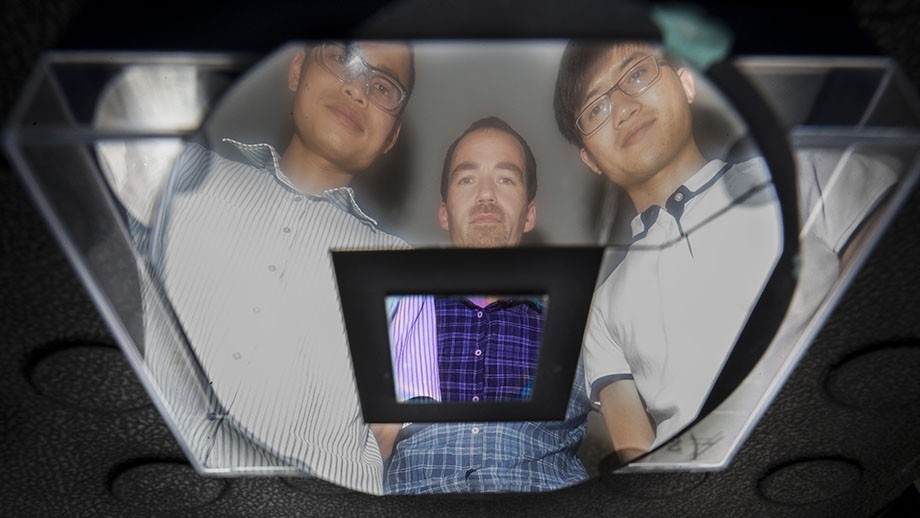Nov 16 2016
 ANU Ph.D. student The Duong, Dr. Tom White and Ph.D. student Jun Peng. Credit: Jack Fox, ANU.
ANU Ph.D. student The Duong, Dr. Tom White and Ph.D. student Jun Peng. Credit: Jack Fox, ANU.
Researchers at the Australian National University (ANU) have discovered a new method to make high efficiency semi-transparent perovskite solar cells. This research breakthrough could lead to cheaper and more efficient solar electricity.
Dr Tom White from the ANU Research School of Engineering stated that the new fabrication method could significantly enhance the performance of perovskite solar cells that can be combined with standard silicon solar cells to generate more efficient solar electricity.
He also stated that perovskite solar cells were more efficient at producing electricity from visible light - red, blue and green - while standard silicon solar cells were good at turning infrared light into electricity.
The prospect of adding a few additional processing steps at the end of a silicon cell production line to make perovskite cells is very exciting and could boost solar efficiency from 25 per cent to 30 per cent. By combining these two cells, the perovskite cell and the silicon cell, we are able to make much better use of the solar energy and achieve higher efficiencies than either cell on its own.
Dr Tom White, Research School of Engineering, ANU
Although perovskite solar cells can improve efficiency, they are not stable for use on rooftops. Dr White stated that the new fabrication method could help to create more stable perovskite cells.
The new fabrication method includes adding a small quantity of the element indium into a cell layer during fabrication, and this could improve the power output of the cell by nearly 25%.
We have been able to achieve a record efficiency of 16.6 per cent for a semi-transparent perovskite cell, and 24.5 per cent for a perovskite-silicon tandem, which is one of the highest efficiencies reported for this type of cell.
Dr Tom White, Research School of Engineering, ANU
According to Dr White, the research placed ANU in a small group of labs worldwide with the potential to improve the efficiency of silicon solar cells using perovskites.
The development is based on the state-of-the-art silicon cell research conducted at ANU. It is part of a $12.2 million "High-efficiency silicon/perovskite solar cells" project headed by University of New South Wales and supported by a $3.6 million funding from the Australian Renewable Energy Agency.
Research collaborators include Monash University, Arizona State University, Suntech R&D Australia Pty Ltd and Trina Solar.